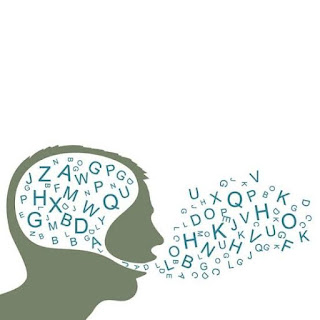Radial categories in word meaning
Semantics cognitive identifies meaning with conceptual structure, the network of stored representations in our memory involved in thought and language . A word can be seen as an entry point to a certain 'region' of our conceptual struc ture. Using the ideas discussed in the preceding sections, we can now sketch the way in which cognitive semantics models the conceptual knowledge structures underlying meaning.
The ICM of head contains such information as the fact that the head is at the top of the body, that it contains the brain, the fact that ears, eyes, mouth and nose are located on it, the fact that it is mostly made of bone, that thinking happens inside it, and so on. Perhaps, as suggested by some investigators, one aspect of the conceptualization associated with head (as with any other non-abstract word) is a visual/spatial element, encoding such features as the referent's typical shape, colour and overall appearance (Jackendoff 2002: 345-350)
.
.
The ICM of head determines the way in which ordinary sentences involv ing it are understood. For instance, we know that the expression shake one's head refers to a particular back and forth movement of the head. rather than to an action in which one takes one's head in one's hands and shakes it. Similarly, we know that if asked to turn one's head we should turn it horizontally from one side to another, not move it in a fixed circular motion without allowing it to come to rest. Facts like these are part cf our understanding of head, and must therefore be represented in conceptual structure.
Note also that the ICM is idealized. is modelled on the human head. The closer a creature's head is to a human head, the more appropriate it is to describe it as having a head. Thus, there is nothing odd about describing monkeys, dogs, cats and many other types of animal as having heads, whereas it seems more strained to describe the corresponding bodyparts of worms. whales, spiders, snails and starfish.
Example :
a. head of the queue
b. head of a comet
c. head of a page
d. head of a hammer/axe
e. head of a department
f. head of a bed
Problems with cognitive semantics
Cognitivist analyses of meaning focus on metaphor and metonymy, clopaedic meaning description and semantic extension, and enable a much more detailed representation of semantic content than is possible in more formal or componential approaches. The radial network models and image-schema diagrams allow a rich description of meaning that seems to make contact with perceptual and cultural aspects of language- aspects which are easily left out in other types of analysis. In spite of these attractions, however. cognitivist analyses of meaning have been criticized for a number of reasons. We will consider three:
1. The ambiguity of diagrammatic representations;
2. The problem of determining the core meaning; and
3. The indeterminate and speculative nature of the analyses.




Tidak ada komentar:
Posting Komentar